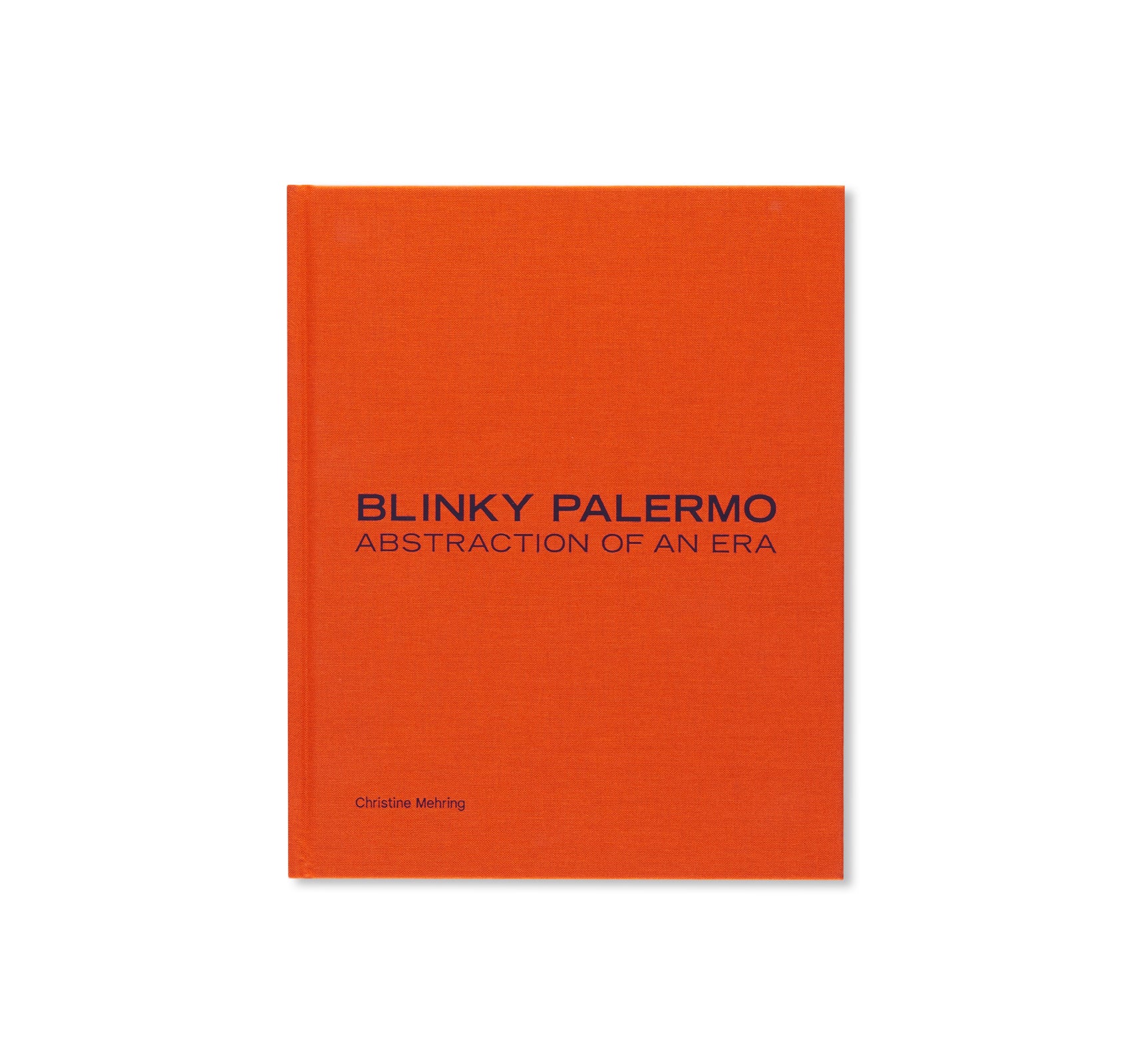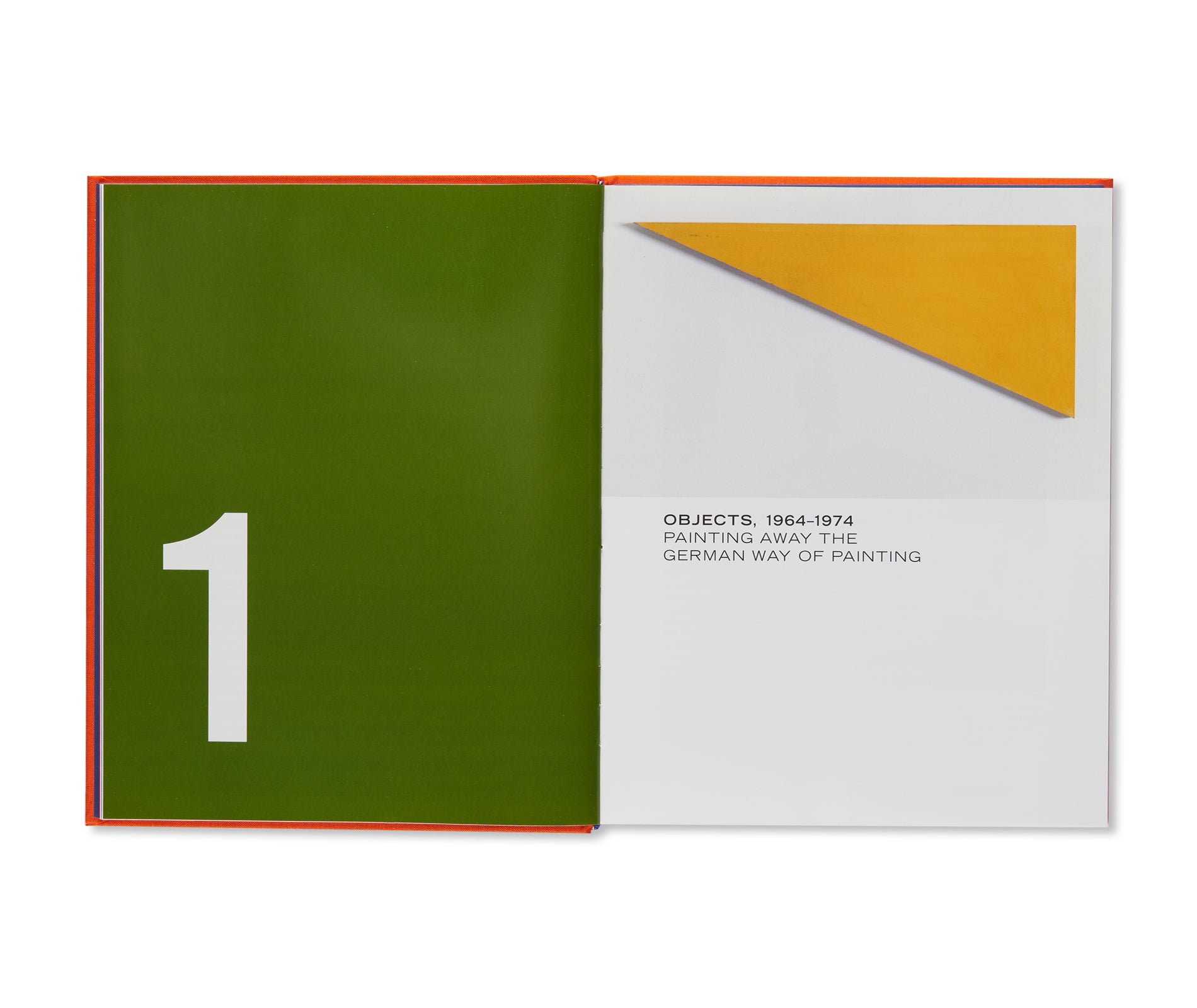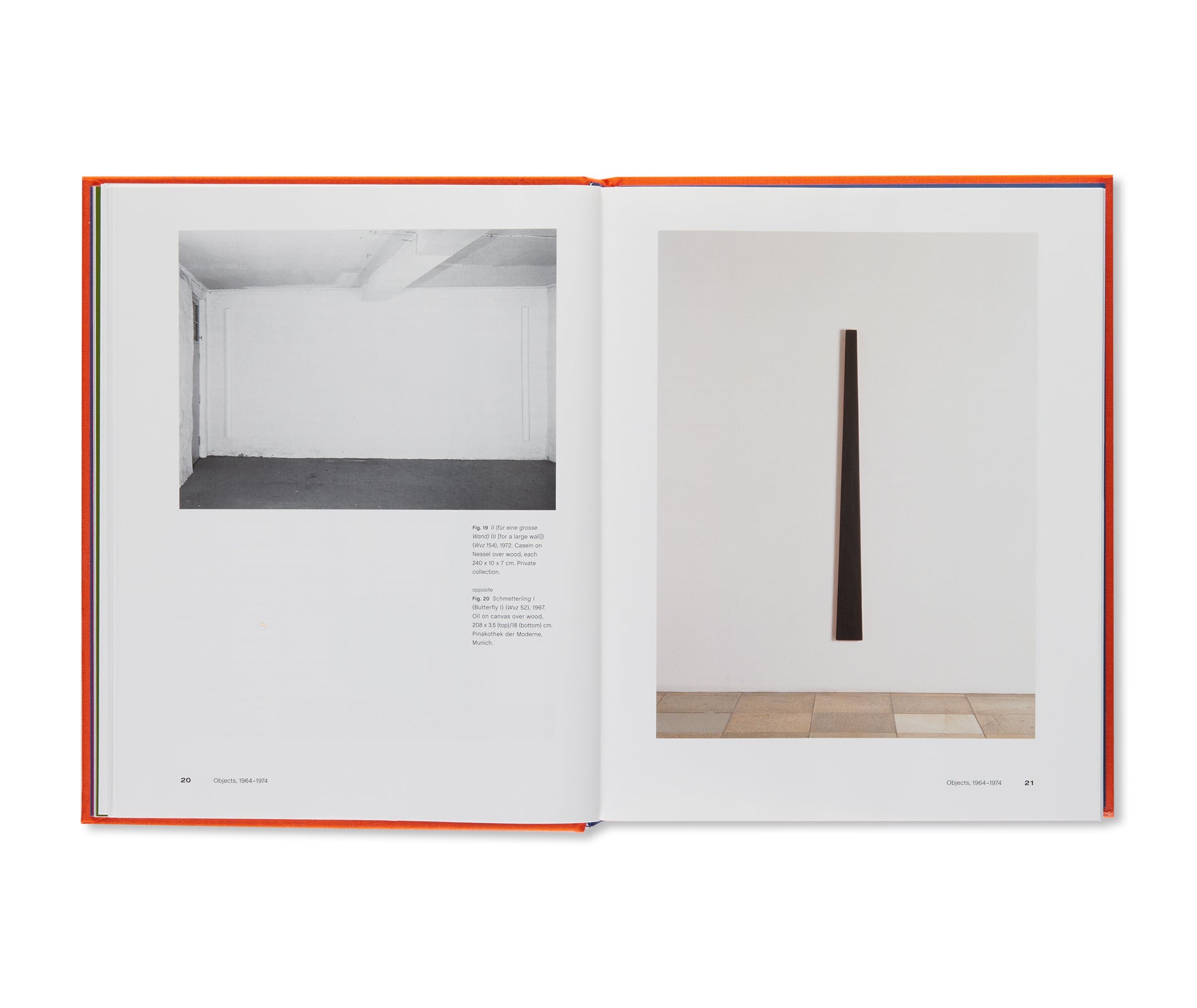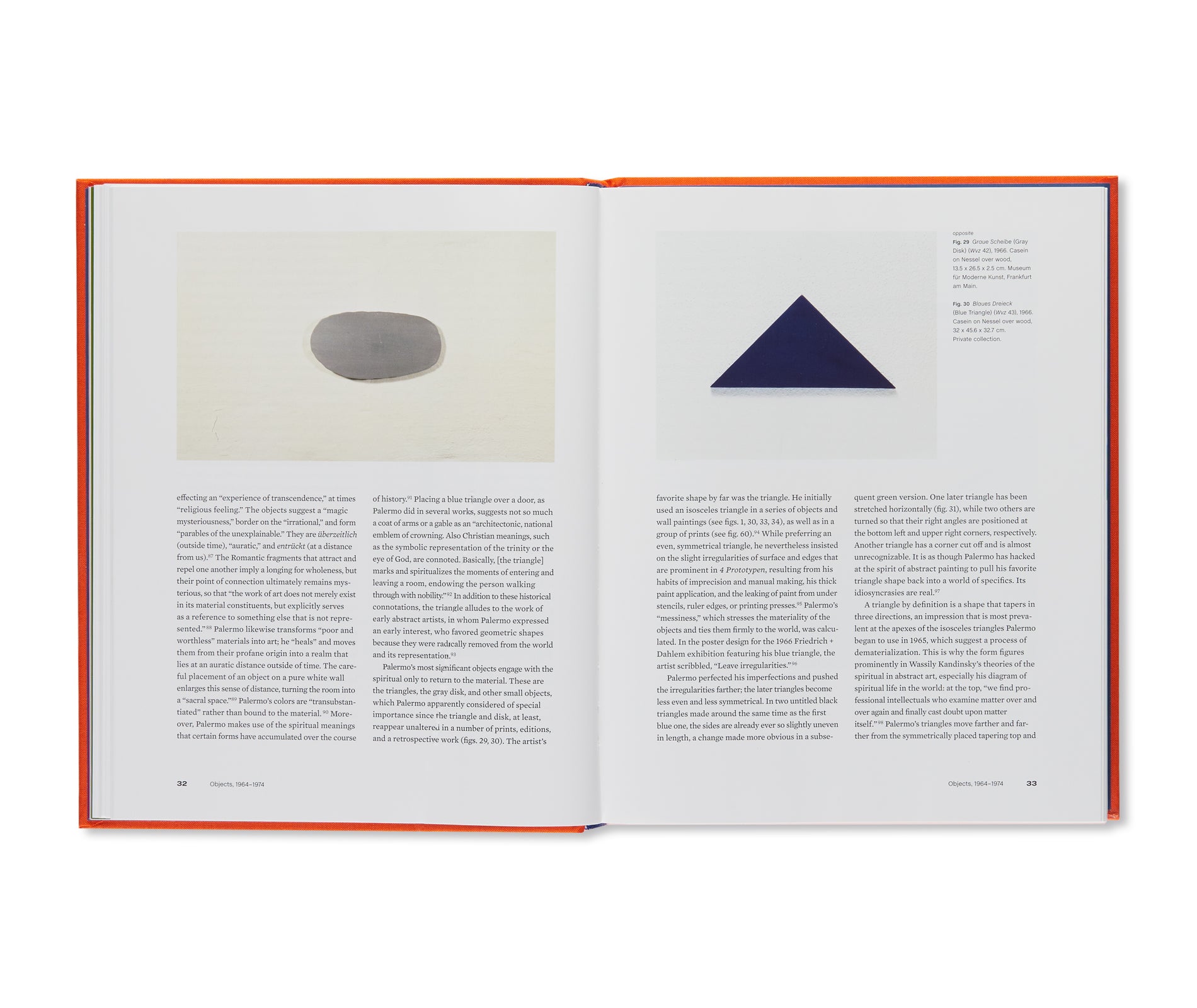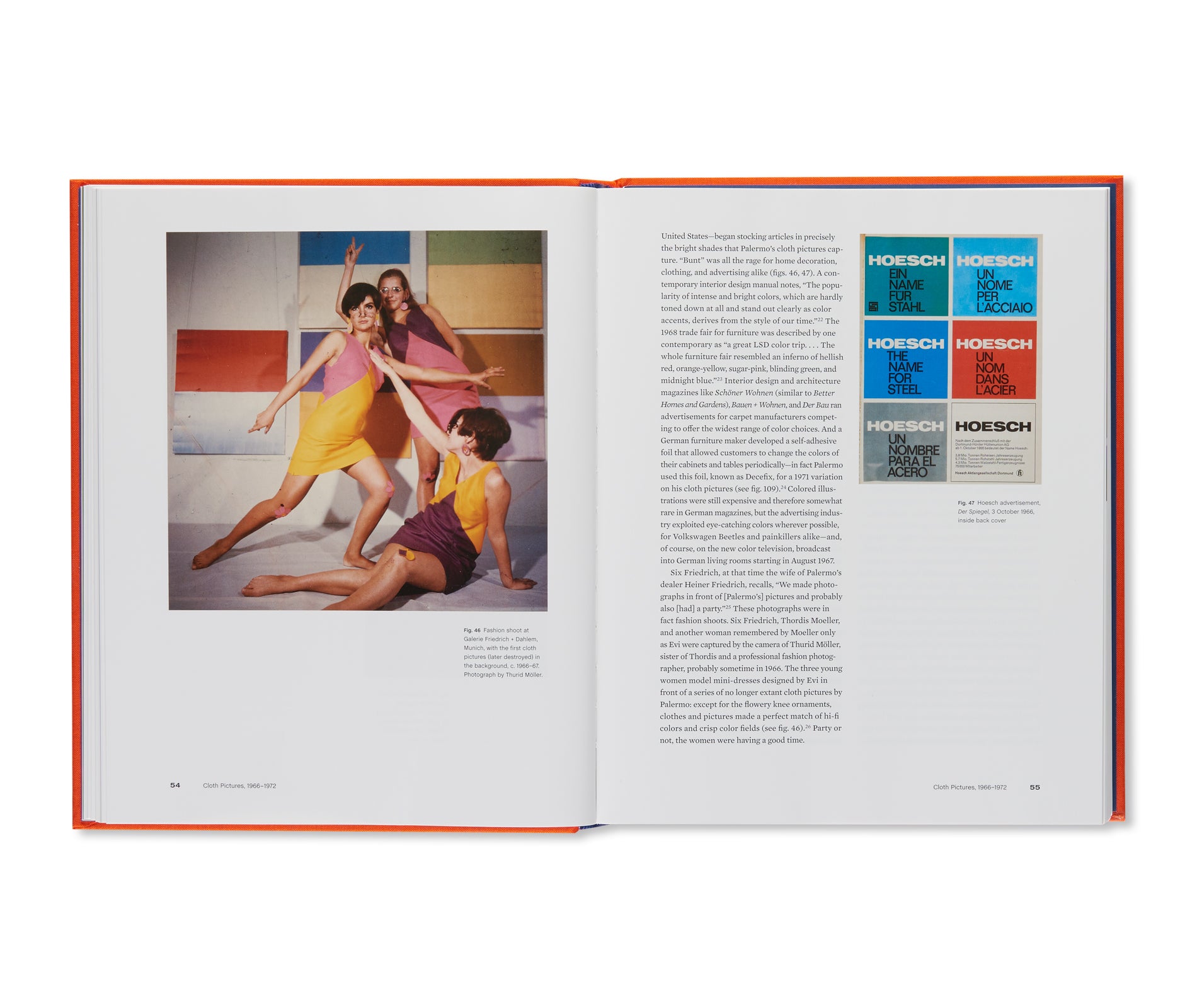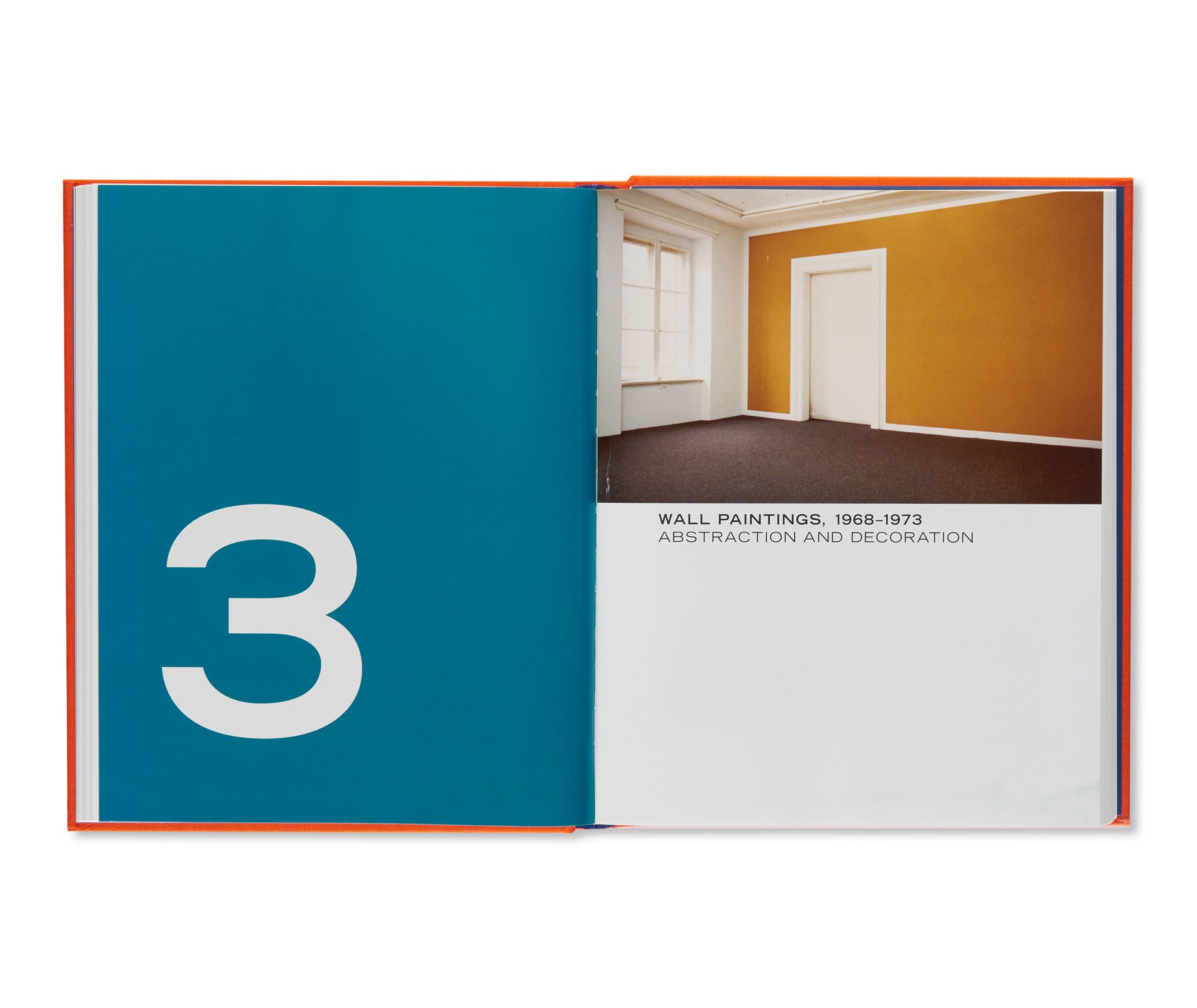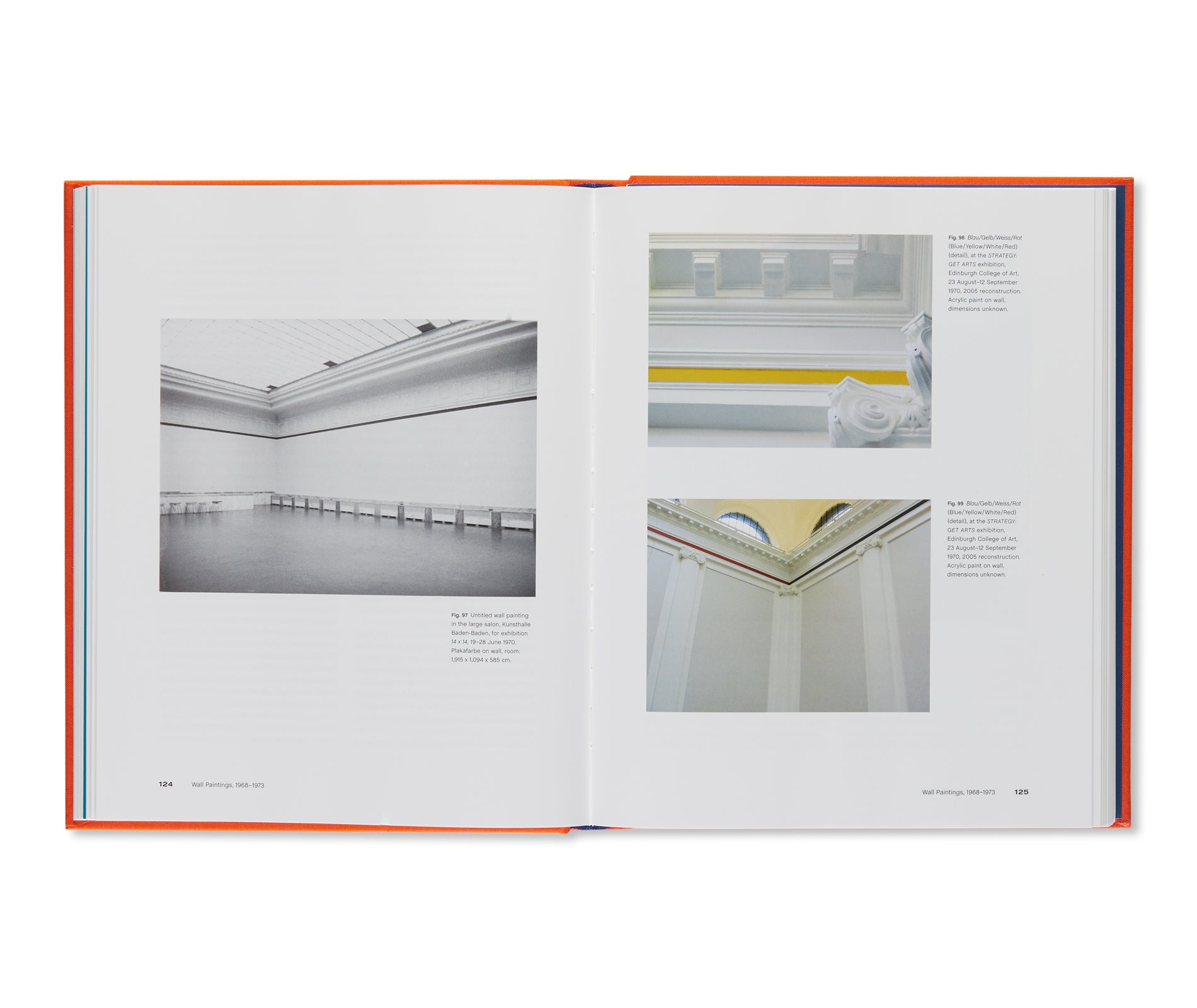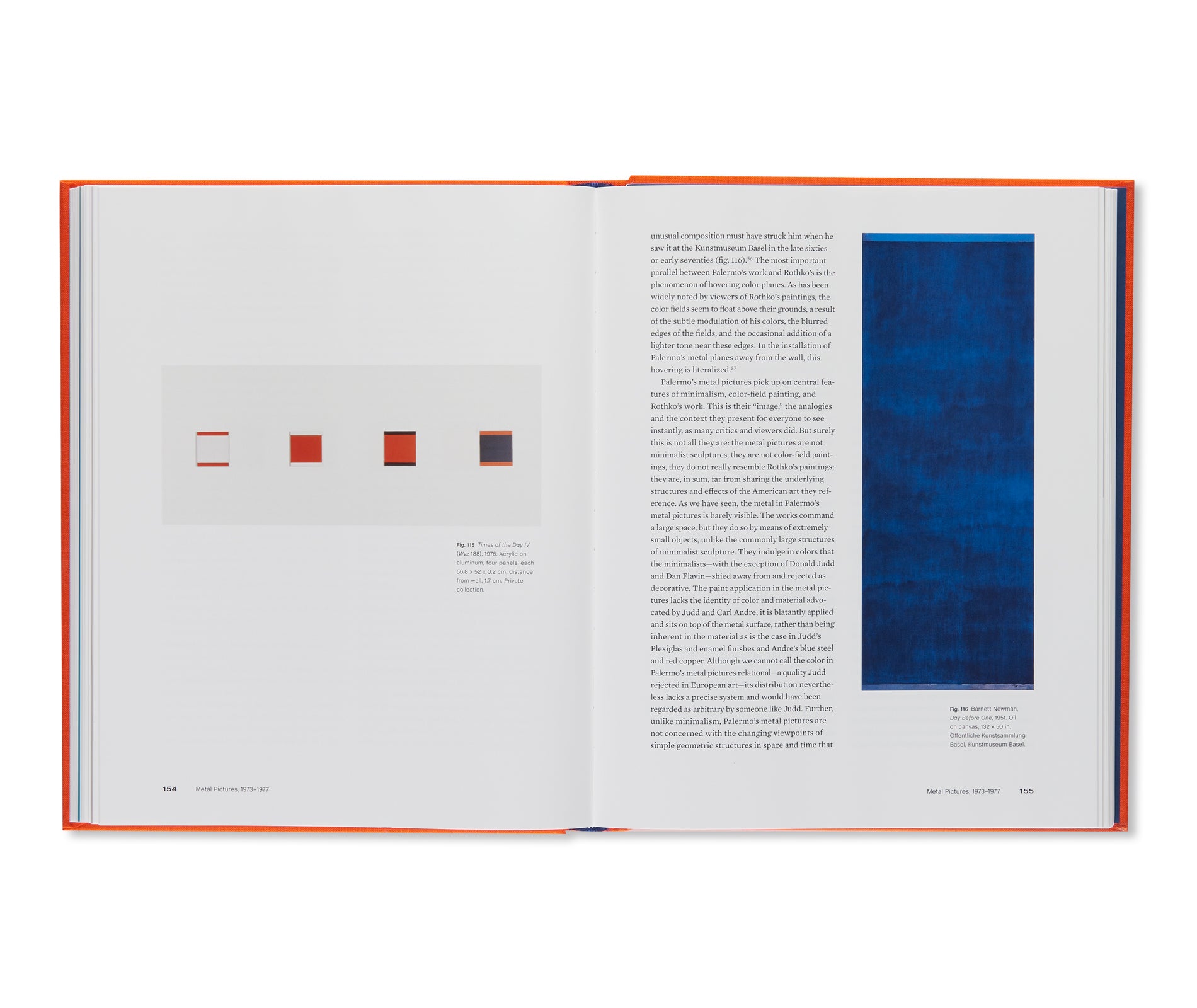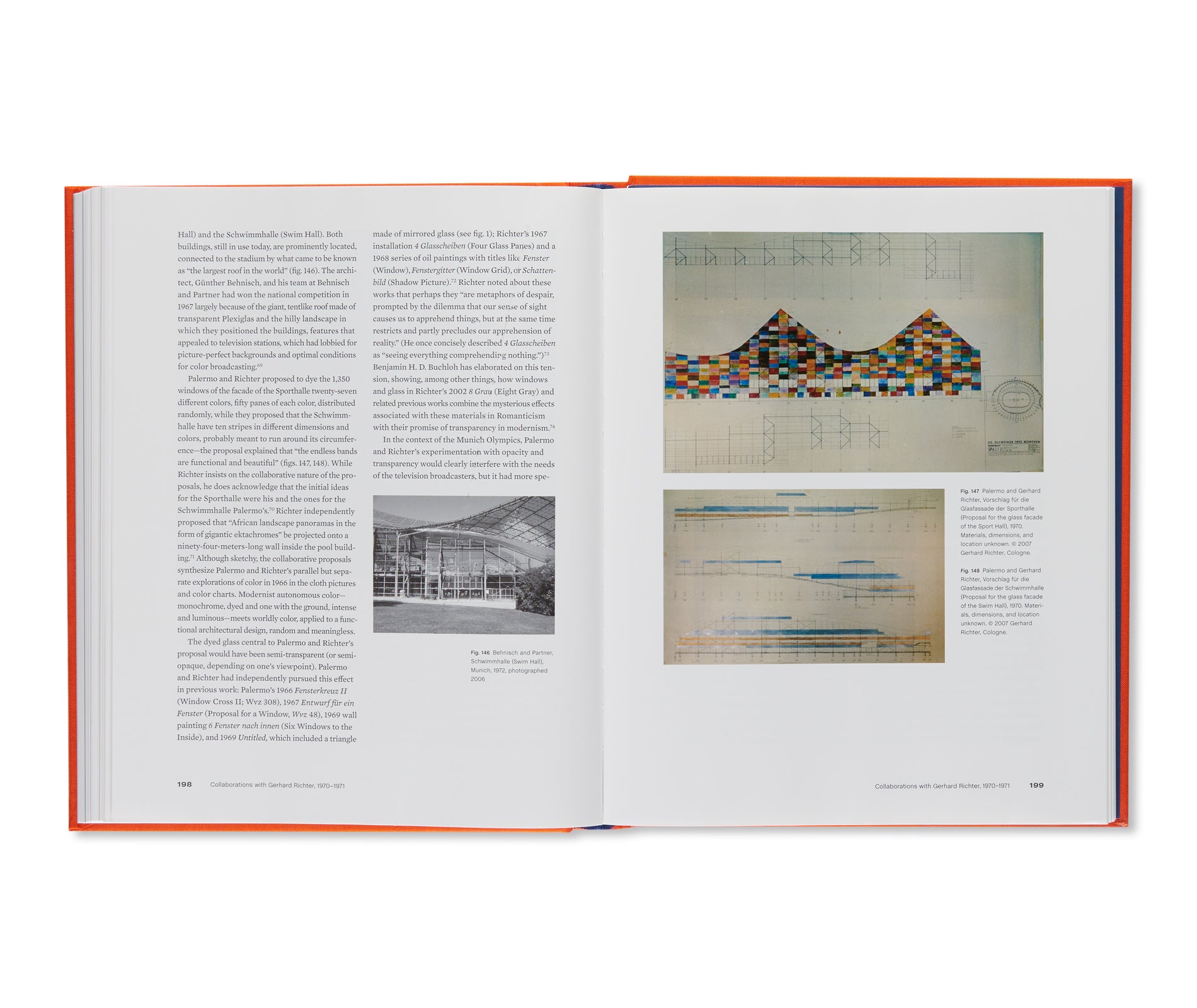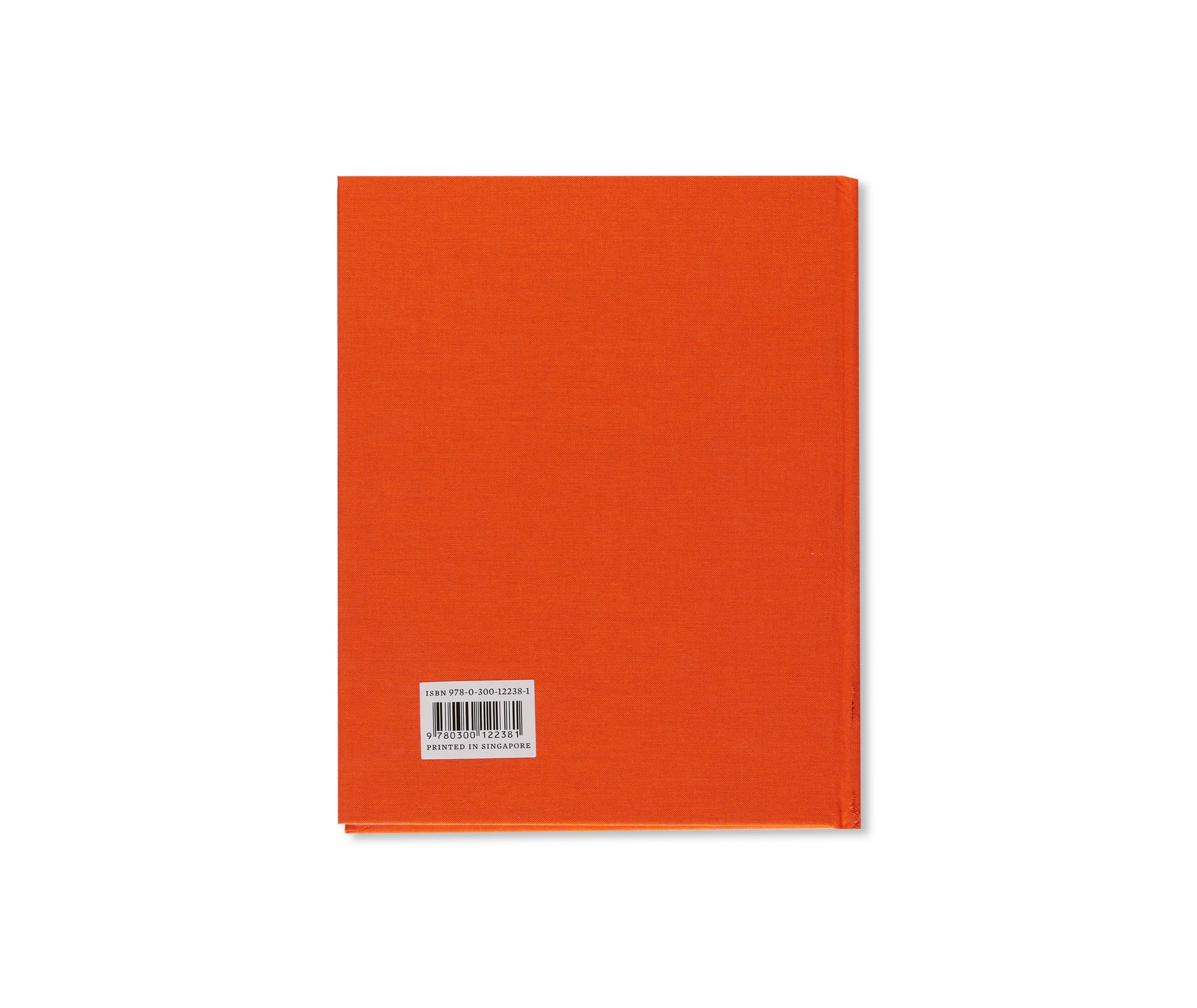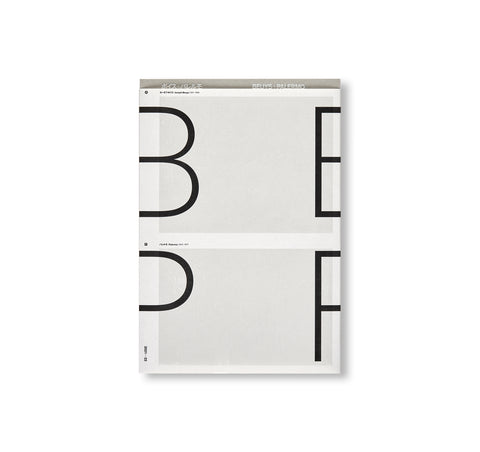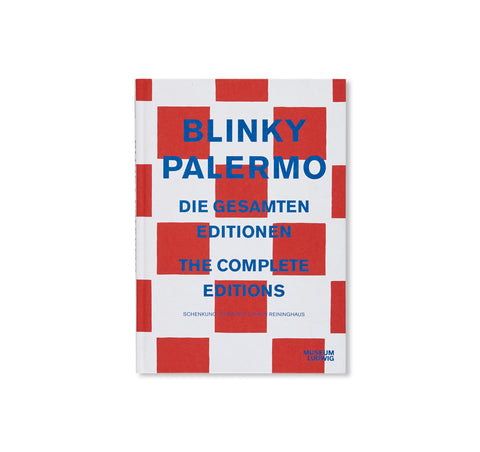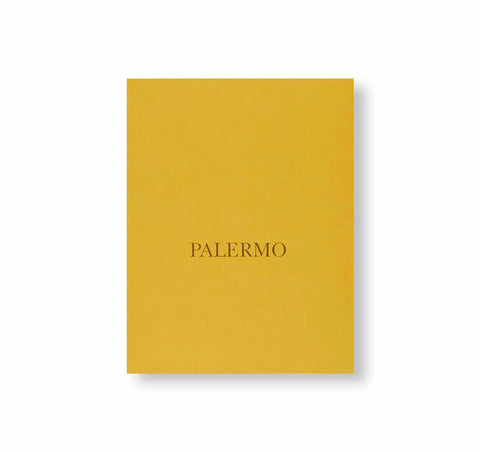ABSTRACTION OF AN ERA by Blinky Palermo
ドイツ人アーティスト、ブリンキー・パレルモ(Blinky Palermo)の作品集。1964年に21歳になったピーター・ハイスターカンプ(Peter Heisterkamp)は、周囲の人たちにアメリカ人のギャング、フランク・ブリンキー・パレルモに似ているといわれたのをきっかけに、遊び心溢れるカラフルな抽象画に「パレルモ」とサインし始めた。今やその名を知らぬ人のいないデュッセルドルフ美術アカデミーに入学し、ヨーゼフ・ボイス(Joseph Beuys)に師事した1964年から、1977年に亡くなるまでの絵画を歴史的・批評的に研究し、ボストウォーアートと抽象主義におけるパレルモの重要性を探求した美しい作品集。
シカゴ大学美術史科の准教授を務める、筆者のクリスティン・メーリング(Christine Mehring)は、作者がその短いキャリアの中でオブジェ、布絵、壁画、金属絵画、友人であり同僚でもあるゲルハルト・リヒター(Gerhard Richter)との共同プロジェクトと5つの異なる作品群を同時に制作したという。これらの作品から、ドイツ美術を国際的に孤立した状態から脱却させ、作為、ユーモア、時代の色、遊びを取り入れることでモダニズム絵画を歴史と共鳴する抽象画に変えようとパレルモが奮闘していたことがわかる。
Twenty-one-year-old Peter Heisterkamp began signing his colorful and playful abstract artworks Palermo in 1964, when peers noted his resemblance to the American gangster Frank “Blinky” Palermo. This handsome book―a historical and critical study of Palermo’s painting from the time he entered Joseph Beuys’s now famous class at the Düsseldorf academy in 1964 to his death in 1977―explores his significance for postwar and abstract art.
Christine Mehring notes that over the course of Palermo’s brief career he created five concurrent but distinct bodies of work: objects, cloth-pictures, wall-paintings, metal-pictures, and collaborative projects, primarily with his friend and colleague Gerhard Richter. Mehring shows how each of these groups demonstrates Palermo’s efforts to lead German art out of its international isolation and to transform modernist painting into historically resonant abstraction by incorporating artifice, humor, period colors, and play.
